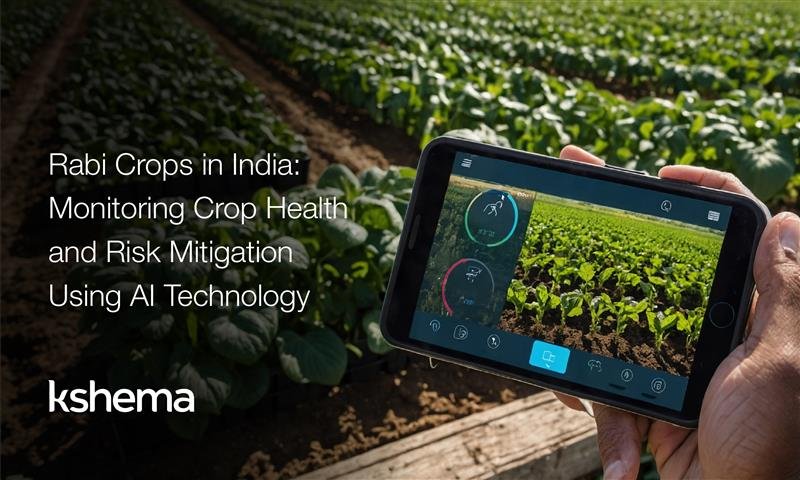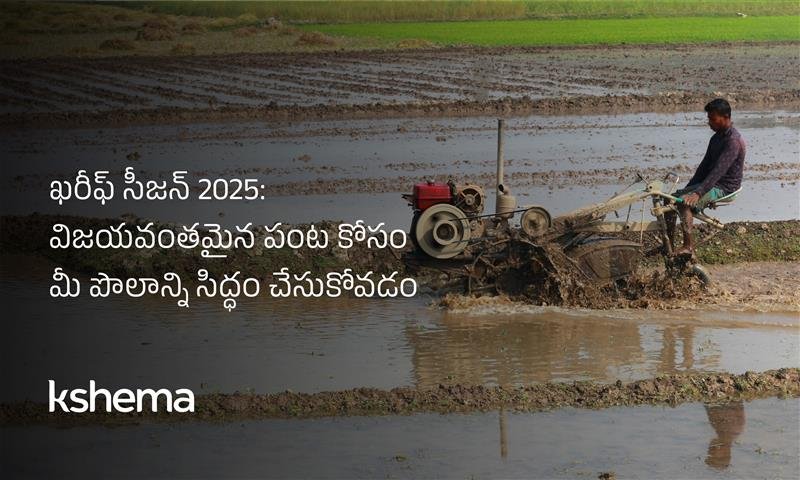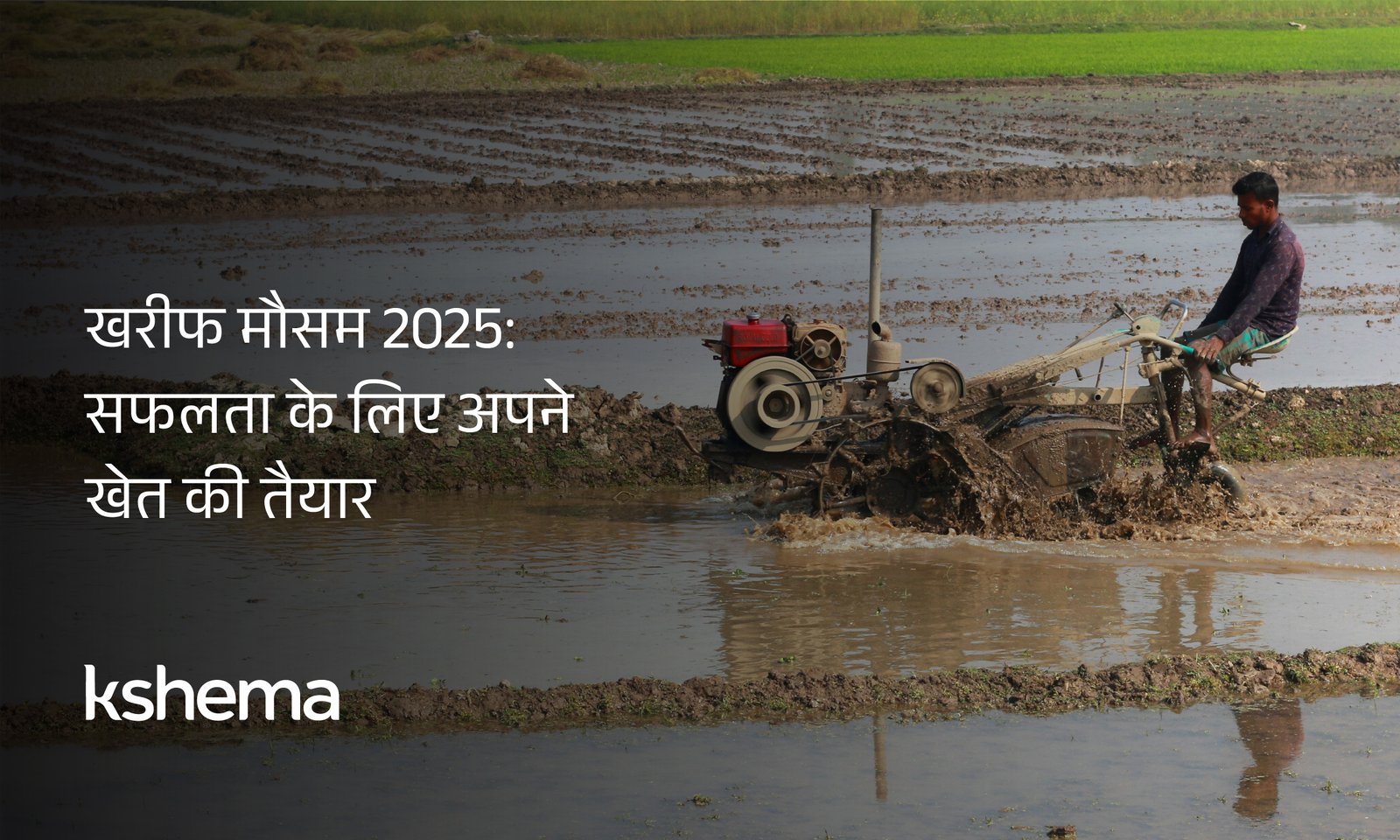Climate-Smart Agriculture: Benefits, Importance & Sustainable Practices
As the world grapples with the accelerating impact of climate change, agriculture stands at the forefront of both — challenges as well as solutions. Farmers, particularly small holders, are facing disruptions caused by unpredictable weather, extreme climate, and frequent calamities. While these challenges are undeniable, there’s an innovative approach offering hope:
At Kshema, we understand sustainability, resilience, and productivity must go hand in hand for agriculture to thrive in a world buffeted by changing climate patterns. Climate-Smart Agriculture is not just a strategy.it’s a fundamental shift towards transforming agriculture into a force that not only adapts to climate change but actively works to mitigate its effects.
In this blog, we will explore how Climate-Smart Agriculture is becoming a game-changer for farmers and why it’s essential for the future of food security, environmental health, and sustainable growth.
What Is Climate-Smart Agriculture?
Climate-Smart Agriculture is a holistic approach to farming that integrates three critical goals:
By blending these three pillars — productivity, resilience, and environmental stewardship — Climate-Smart Agriculture is leading the way to a more sustainable and secure agricultural future.
The Future of Farming: Why Climate-Smart Agriculture Matters
At Kshema, we believe that embracing sustainable farming methods is no longer optional; it’s essential. CSA is an urgent response to the rapidly changing environment and the need to feed a growing population. Here’s why CSA is critical:
1. Ensuring Food Security
With the increasing frequency of extreme climate events, food production systems are under greater stress than ever before. CSA practices such as opting for drought-resistant crops, water-efficient irrigation systems, and diversified farming help ensure that farmers can continue even in the face of unpredictable weather conditions.
2. Promoting Environmental Sustainability
CSA promotes sustainable practices like agroforestry, reduced pesticide use, and organic farming. These methods help restore soil health, improve biodiversity, and ensure fertile, viable land for the future.
3. Supporting Smallholder Farmers
Smallholder farmers in developing regions are particularly vulnerable to the impacts of climate change. CSA offers them the tools they need to thrive in a changing world. By adopting CSA practices, farmers can improve yields, reduce the financial risks posed by climate-related disasters, and tap into new markets for sustainable agricultural products.
4. Mitigating Climate Change
Agriculture contributes significantly to global greenhouse gas emission. CSA offers an opportunity to reduce these emissions through practices like improved livestock management, agroforestry, and no-till farming. It also contributes to long-term carbon sequestration, helping to restore climatic balance.
Key Practices in Climate-Smart Agriculture
Climate-Smart Agriculture consists of a diverse array of practices. These methods are not only scientifically proven but are also adaptable to different local conditions and farming needs. Here are some of the most impactful CSA practices:
1. Agroforestry
Agroforestry involves integrating trees into farming landscapes, which can enhance biodiversity, improve soil quality, and act as natural windbreaks. Trees also help in storing carbon, making agroforestry a crucial element in mitigating climate change.
2. Efficient Water Management
Water resources are depleting in many regions, especially as climate change exacerbates drought conditions. CSA emphasises the efficient use of water through methods like drip irrigation, rainwater harvesting, and soil moisture management to ensure crops receive adequate water while reducing wastage.
3. Drought-Resistant Crops
As part of CSA, farmers are encouraged to plant drought-resistant crops that can thrive even under water-deficient conditions. These crops require less water to grow, helping farmers maintain their production even when rainfall is scarce.
4. Soil Conservation and Fertility Management
Healthy soils are the backbone of productive agriculture. CSA promotes sustainable soil management techniques like crop rotation, reduced tillage, and organic fertilisation. These practices help prevent soil erosion, enhance soil structure, and boost long-term agricultural productivity.
5. Integrated Livestock Management
Incorporating livestock into farming systems in a sustainable manner is another important aspect of CSA. By improving grazing practices and using integrated systems that combine crop and livestock farming, CSA reduces greenhouse gas emissions and enhances both productivity and sustainability.
Benefits of Climate-Smart Agriculture for Farmers
The benefits of climate-smart agriculture are much beyond farming. Here are the key advantages:
Overcoming Challenges in Implementing Climate-Smart Agriculture
While the benefits are clear, adopting Climate-Smart Agriculture on a global scale does come with challenges:
The Future of Climate-Smart Agriculture
The future of importance of climate smart agriculture lies in the continued collaboration between farmers, governments, NGOs, and businesses. As the impact of climate change intensifies, Climate-Smart Agriculture is emerging as an essential tool to ensure food security without compromising the health of the planet. At Kshema, we are committed to supporting farmers as they transition to CSA practices, promoting sustainability and resilience in agriculture.
Conclusion
Climate-Smart Agriculture is the key to transforming farming systems in the face of climate change. By focusing on sustainability, productivity, and resilience, CSA offers a blueprint for a food-secure future. At Kshema, we believe in a future where agriculture not only adapts to the changing climate but also plays an active role in mitigating its effects. With the right support, innovation, and commitment, CSA can ensure that farming remains a powerful force for good in a changing world.
Frequently Asked Questions on Climate-Smart Agriculture
Q1. What is Climate-Smart Agriculture?
A. Climate-Smart Agriculture (CSA) is an approach that improves productivity, builds resilience to climate change, and reduces greenhouse gas emissions in farming.
Q2. What are the benefits of Climate-Smart Agriculture?
A. The benefits of Climate-Smart Agriculture include higher crop yields, better soil health, efficient water use, reduced emissions, and improved farmer incomes.
Q3. Why is Climate-Smart Agriculture important in India?
A. Climate-Smart Agriculture is important in India because it helps farmers adapt to erratic weather, ensures food security, and supports sustainable rural livelihoods.









